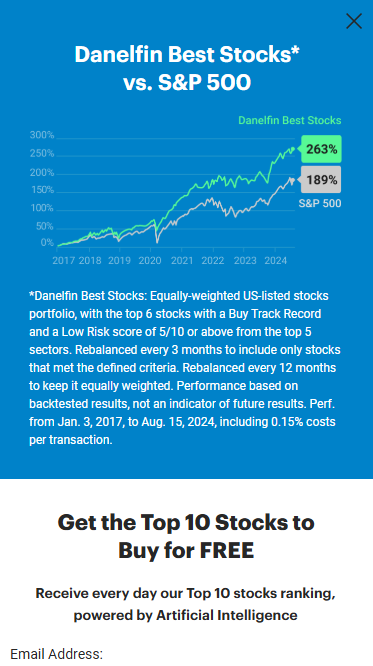20 Great Tips On Deciding On AI Stock Predictions Analysis Sites
20 Great Tips On Deciding On AI Stock Predictions Analysis Sites
Blog Article
Top 10 Tips To Assess The Security And Security Of Ai Trading Platforms
Security and privacy are essential when using AI stock predicting/analyzing trading platforms because they typically handle sensitive financial information as well as personal data. A data breach or misuse can result in significant financial loss as in addition to reputational damage. Here are the 10 best ways to evaluate the security and privacy on these platforms.
1. Examine Data Encryption
Secure transmission of data: Ensure that your platform is using encryption protocols that are secure, like TLS/SSL to encrypt any data exchanged between the servers on your device and the server of the other.
Verify encryption while at the time of rest. Check to see if sensitive data is encrypted on the server platform, using secure standards of encryption (e.g. AES-128).
End-to-end encryption: Check that your platform has encryption from beginning to end for sensitive data and communications. are sensitive.
2. Examine the authenticity of measures
Two-factor authentication (also called copyright) is an excellent way to increase security.
Check for biometric authentication.
Password policy - Make sure that the platform has strict policies regarding passwords (e.g. length, requirements for length or complexity requirements).
3. Examine for Regulatory Compliance
Financial regulations: Ensure your platform is in compliance with all applicable financial laws (e.g. SEC FINRA MiFID II).
Law on data protection: If you conduct business with a region that is subject to these laws, make sure you are in compliance.
Audit certifications. Check that the platform you are considering has passed an independent assessment of security or certificates.
4. Review Data Access Controls
Role Based Access: Ensure that the platform is using role-based access controls (RBAC) to restrict access to information to only authorized users.
Verify that you have the ability to set permissions at granular levels for various team members.
Monitoring activity. Check that the platform tracks suspicious activity of users and records it.
5. Examine the vulnerability management
Regular updates: Ensure that the platform updates its software regularly to fix weaknesses.
Penetration test: See if your system is tested regularly to identify and correct any security flaws.
Programs for bug bounty: Verify whether there's a bug bounty program available on the platform to motivate security researchers from outside to disclose security vulnerabilities.
6. Evaluate Data Privacy Policies
Transparency Check out the privacy policy to see the ways in which your personal data is collected, used, or shared.
Data minimization - Ensure that the platform collects only the information that it needs for its operation.
Third-party sharing : Check the platform's data sharing policies and terms.
7. Secure API usage should be inspected
API security. Ensure APIs use secure authentication methods (e.g. OAuth keys, API keys), and that data is protected.
Rate limiting. Verify the API's rate limitation to avoid abuse.
Look for access logs. The platform should record API use and access in order for auditing and monitoring.
8. Assess Incident Response & Recovery
Plan for the response to incidents Be sure that the platform has a solid strategy to deal with data breaches and security incidents.
Notification policies: Determine that the platform is able to notify users quickly in the event of a security breach.
Check the data backups and Disaster recovery plans.
9. Examine the security measures for physical security
Data center security - Ensure that the server for the platform is located in secure data centers that have physical security (e.g. surveillance and access control).
Redundancy: Determine if there are redundant systems on the platform to ensure that data is available in the event of hardware failure.
Geographic distribution: Ensure that the data is distributed to multiple geographical locations to increase the resilience.
10. Test User Privacy Controls
Data deletion: Make sure your platform allows deletion of all your personal data when you decide to end your use of it.
Privacy settings: Check whether your platform provides privacy settings that control what data can be shared or made visible.
Check for anonymization. This is essential for those using the platform to conduct analytics or machine-learning.
Bonus Tips
Reputation and feedback from users: Review user reviews and feedback in order to gauge the platform's record regarding security and privacy.
Trial period: Use a free trial or demo to try out the security features and privacy controls.
Customer Support: Ensure that the platform offers a solid assistance for any problems or issues related to security.
By following these tips that you follow, you will be able to assess the security and privacy of AI trading platforms that predict or analyze stocks, ensuring your financial and personal information is secure. Secure trading platforms are not only a method to safeguard your assets, it also builds confidence and trust. See the best recommended reading about ai investing platform for site advice including best ai trading app, ai for stock predictions, options ai, investing ai, ai investment platform, stock ai, ai stock picker, ai investment platform, investing ai, market ai and more.
Top 10 Tips On Assessing The Speed And Latency Of Ai Stock Prediction/Analyzing Trading Platforms
Latency and speed are crucial aspects to consider when evaluating AI stock prediction and analysis platforms, especially for active traders, algorithmic traders as well as high-frequency traders. Millisecond delays can impact on the profitability of a trade. Here are 10 of the best ways to measure the speed and latency of the platforms.
1. Evaluate the Real-Time Data Feeds
Data delivery speed: Make sure the platform delivers real-time data (e.g. sub-millisecond delay).
The data source's proximity Check whether the server of the platform is situated near major exchanges, which can reduce time to transmit data.
Data compression: Examine for efficient methods of data compression that can speed up the delivery of data.
2. Time to test trade execution
Order processing time is the time at which your order will be processed and executed by the platform.
Direct market access (DMA). Check to see if the platform you are using has DMA. DMA allows orders sent directly to an exchange to be processed without any intermediaries.
Execution Reports: Verify if your platform provides specific reports on the execution of orders, including timestamps.
3. Review the responsiveness of the Platform
User interface (UI speed) Test how quickly the platform responds to inputs for example, clicking buttons or loading charts.
Chart updates: Check if charts and visualizations update in real-time without lag.
The performance of mobile apps: If you use mobile apps on your smartphone, make sure that it's as efficient as its desktop version.
4. Look for infrastructure that is not low-latency.
Server locations: Ensure the platform is using low-latency servers in close proximity to major exchanges or financial hubs.
Co-location service: See if the platform offers co-location, which allows you to host your trading algorithm on servers that are close to the exchange.
High-speed network: Determine if the platform is using high-speed fibre optic networks, or other low latency technologies.
5. Test simulation speed and backtesting
Check the speed at which your platform can analyze and process the historical data.
Simultaneous simulation of trades The platform should be able to simulate live trading with no noticeable delay.
Parallel processing (or distributed computing): Find out if a platform uses parallel or distributed processing to speed up complicated calculations.
6. Evaluation of Latency in API
API response: The platform's API is evaluated by the time it takes to answer requests.
Rate limits: Check that the API has acceptable rate limits to prevent delays during high-frequency trading.
WebSocket Find out if your platform is compatible with WebSocket protocols which permit streaming data in real time with minimal latency.
7. Test platform stability under load
Simulation of scenarios involving high volume trading to test if the platform is stable and responsive.
Market volatility: Ensure that the platform can manage price fluctuations during periods that are high-risk.
Test for stress: Check whether your platform has tools for stress-testing strategies under extreme conditions.
8. Study the network and its connectivity
Internet speed requirements: Make sure your internet connection is running at the recommended speed of your platform.
Reliable connections: Check if your platform has redundant internet connections. This will help you prevent the possibility of downtime.
VPN latency. Verify if you are using the VPN in the event that this causes latency.
9. Look for features that speed up your speed.
Pre-trade Analytics: Be sure the platform provides pre-trade analysis to improve the speed of execution, order routing and other factors.
Smart order routing: Check whether your platform uses SOR to find the most efficient and speediest execution site.
Monitoring of latency: Ensure that the platform allows you to monitor and analyze your latency live.
Check out user feedback and benchmarks
Reviews from users: Search for user feedback on the site to gauge the speed and latency of the platform.
Third-party benchmarks from third-party. Find benchmarks that are independent or reviews that evaluate a platform's speed with other platforms.
Case studies: Check if the platform offers case studies, or testimonials, that highlight its ability to work with low-latency.
Bonus Tips
Trial period for free: Try the platform’s latency and speed in real-world scenarios using a demo or free trial.
Support for customers: Make sure the platform provides support for latency-related issues or for optimization.
Hardware requirements: Find out whether you require special hardware for optimal performance (e.g. high-performance PCs).
With these suggestions, it is possible to precisely assess the speed, latency, and precision of AI software for analyzing and predicting stocks. This will allow you to choose a platform according to your specific needs in trading and minimize any delays. A low latency is crucial for algorithmic traders and high-frequency traders, where even small delays can have a significant impact on profit. Check out the best web site for best ai stock prediction for website recommendations including how to use ai for copyright trading, how to use ai for stock trading, ai investment tools, best ai trading platform, stock predictor, ai share trading, ai stock investing, free ai stock picker, best ai trading platform, best ai trading platform and more.